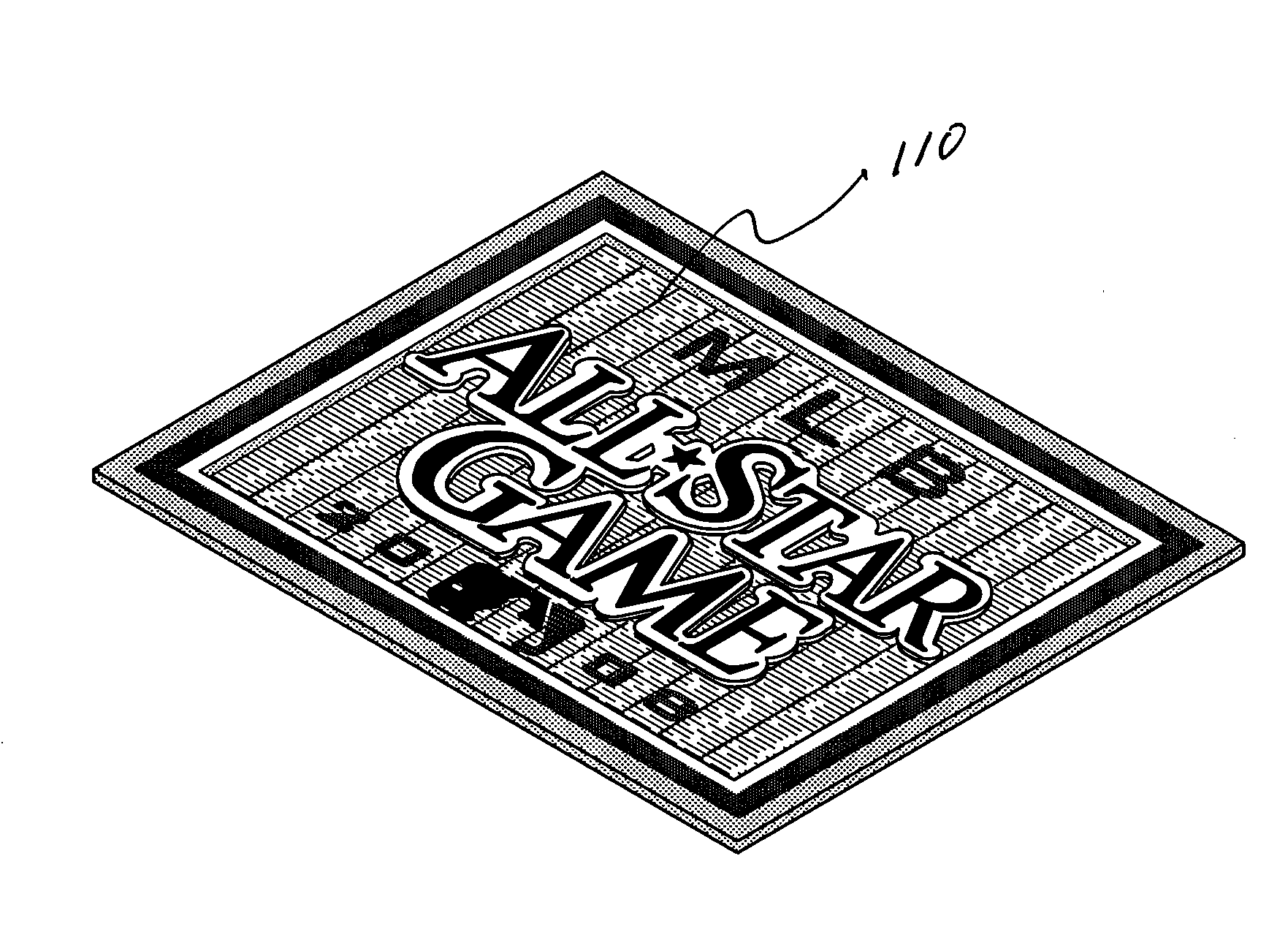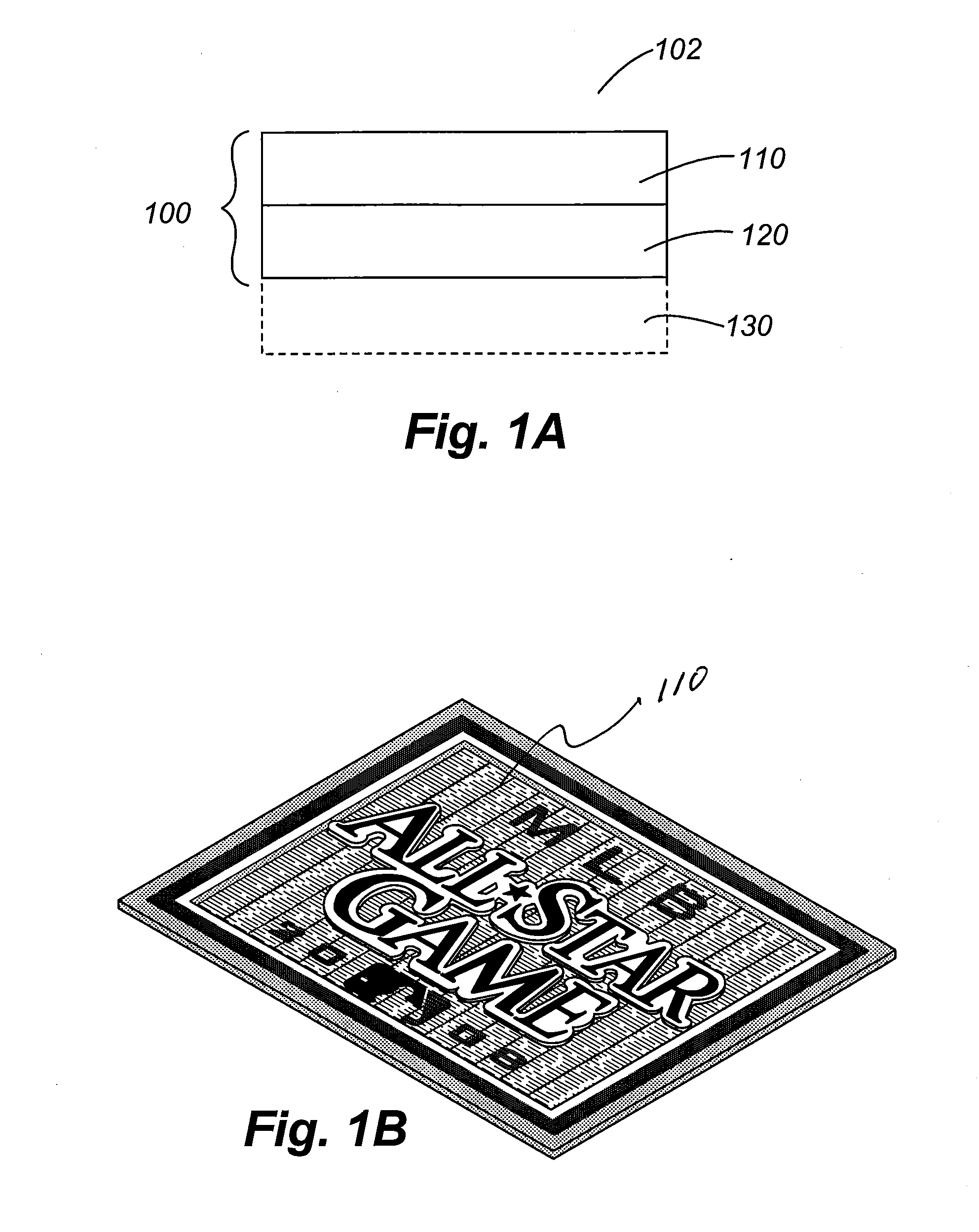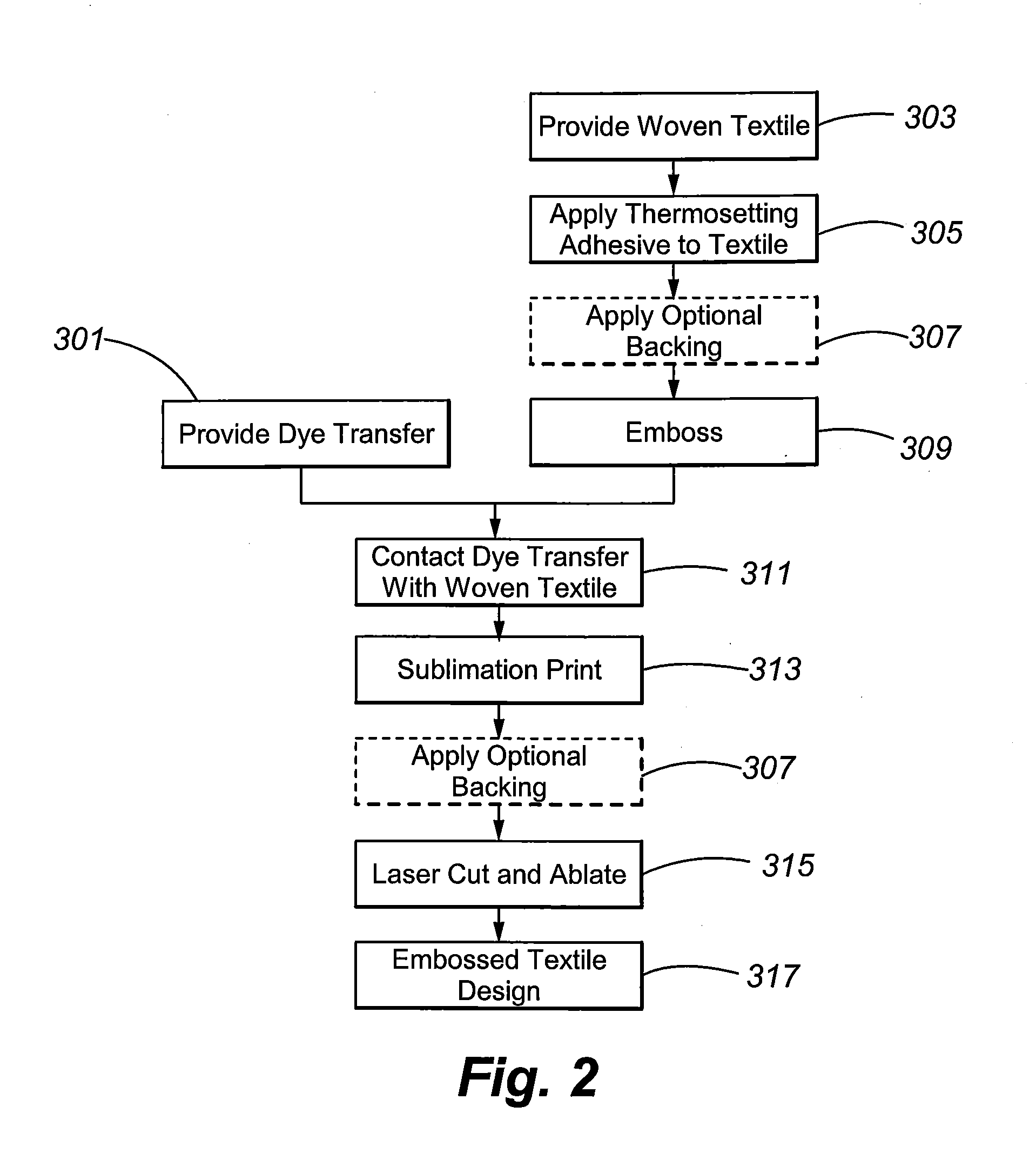Sublimation dye printed textile
a technology of textile dye and printed textiles, applied in the direction of dyeing process, weaving, transportation and packaging, etc., can solve the problems of unpractical skilled in the art, unattainable in the textile dye print arts, open weave, etc., to achieve low pressure, high pressure, and/or loft. , the effect of tight weav
- Summary
- Abstract
- Description
- Claims
- Application Information
AI Technical Summary
Benefits of technology
Problems solved by technology
Method used
Image
Examples
Embodiment Construction
[0038]An applique or heat transfer (hereinafter textile design) having the appearance of being embroidered or stitched will be described according to an embodiment of the present invention. With reference to FIGS. 1A and 1B, a textile design 100 includes a, preferably woven, textile 110, a thermosetting adhesive 120, and an optional backing material 130. As can be seen from FIG. 1B, the combination of a woven textile 110 and a digitally imaged embroidered, chenille, and / or stitched version of the same design can have a high degree of resemblance to the actual embroidered, chenille, or stitched design. FIG. 1B is graphical depiction of the embroidered, hand-stitched appearance of the woven textile 110 and digitally printed “MLB”, “2008”, and Major League Baseball™ logo images. A highly accurate and high resolution digital image of the actual embroidered or stitched design is used to form a sublimation dye transfer. The dye transfer produces a high resolution sublimation printed image...
PUM
| Property | Measurement | Unit |
|---|---|---|
| pressure | aaaaa | aaaaa |
| pressure | aaaaa | aaaaa |
| pressure | aaaaa | aaaaa |
Abstract
Description
Claims
Application Information
 Login to View More
Login to View More - R&D
- Intellectual Property
- Life Sciences
- Materials
- Tech Scout
- Unparalleled Data Quality
- Higher Quality Content
- 60% Fewer Hallucinations
Browse by: Latest US Patents, China's latest patents, Technical Efficacy Thesaurus, Application Domain, Technology Topic, Popular Technical Reports.
© 2025 PatSnap. All rights reserved.Legal|Privacy policy|Modern Slavery Act Transparency Statement|Sitemap|About US| Contact US: help@patsnap.com



